Oyster farmers need to do some math. Depending on what size oyster seed you start with, they will grow up to 50 times in size and weight before they are ready for market.
Luckily, we’re here to help with the following rules of thumb:
When oysters are small, they should go into bags with a mesh size that is about half the oyster size. As the oysters get over an inch or so, this ratio changes to a mesh about 2/3rds the size of the oyster. The goal is to provide the most possible water flow while ensuring oysters do not fall
through or grow into the mesh. It’s up to you how often to change the bag mesh size, but bear in mind that if the oyster size-to-mesh ratio gets too high, the water flow may reduce considerably and the weight per cage goes up.
This table should help you get a handle on things. It is based on producing 100,000 oysters.

How does this translate into gear?
So… to bring 100,000 oysters to market, you will start with only 10 bags. By the time the oysters reach 3 inches, you will need about 450 bags. At harvest time, you should plan for the following:
- 225 mature 3” oysters per grow-out bag
- 900 oysters per 4-bay cage
- 1350 oysters per 6-bay cage
- 1200 oysters per stack on a bottom tray (3×4’ footprint)
How am I counting the oysters?
Typically, referring to the chart above, a 1/4 full bag should give you an eyeball estimate of the stocking density. Growers will often distribute to new bag sizes when 1/2 – 2/3 full.
How fast do oysters grow?
This is site specific. Temperature, water flow, and available nutrients all affect growth rates. Canadian farms can take up to 5 years for oysters to reach harvest size, while some farms in the Gulf of Mexico take less than 9 months. Every site has its own unique characteristics that need to be considered when planning and operating a farm.
We can help!
Our customers benefit from our years of experience outfitting oyster farms all over the country. Are you just starting out and need help getting up and running? Do you need help determining the proper equipment type and quantities? Contact us — we can help!

